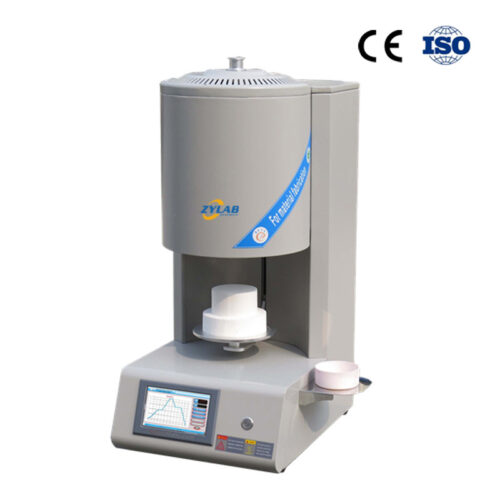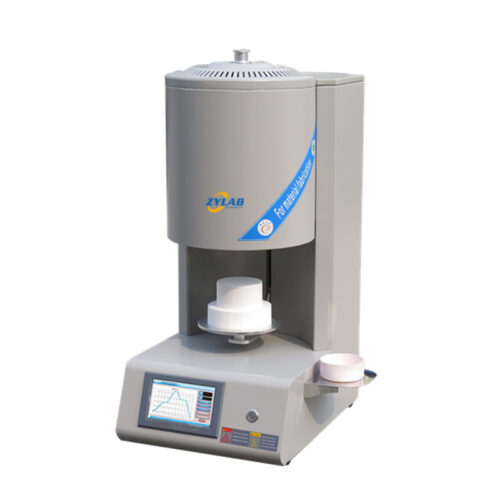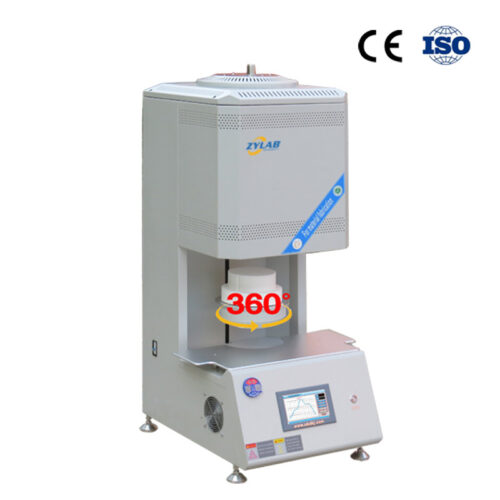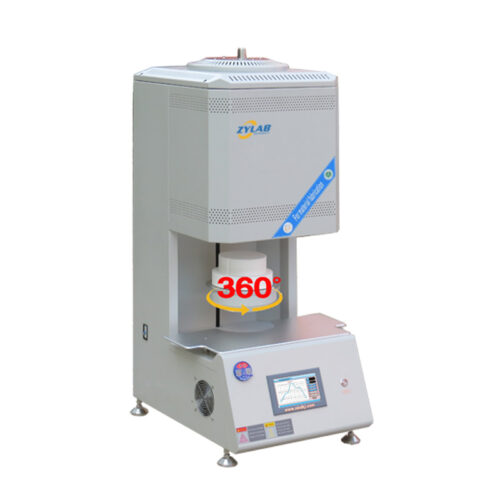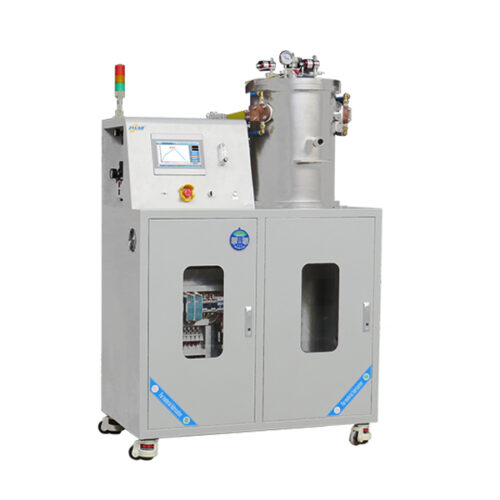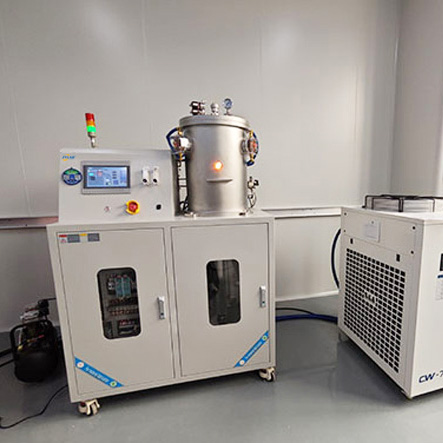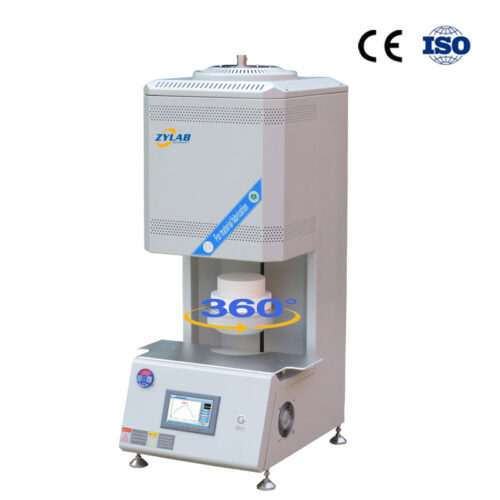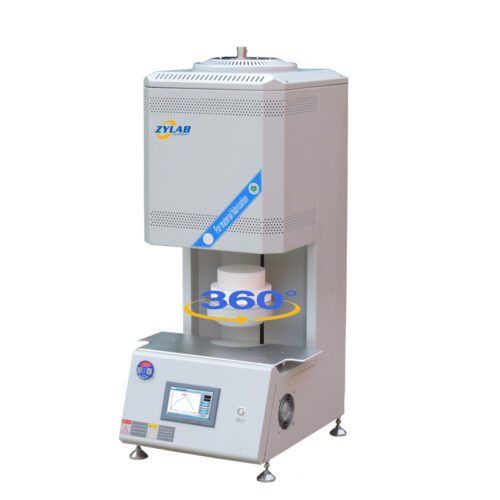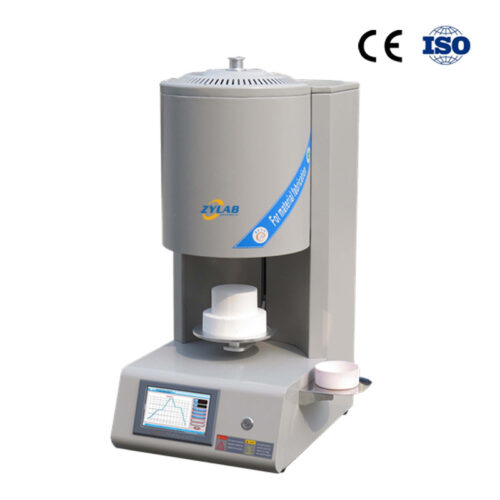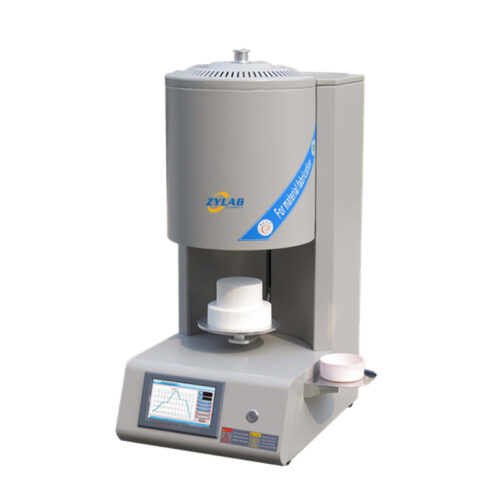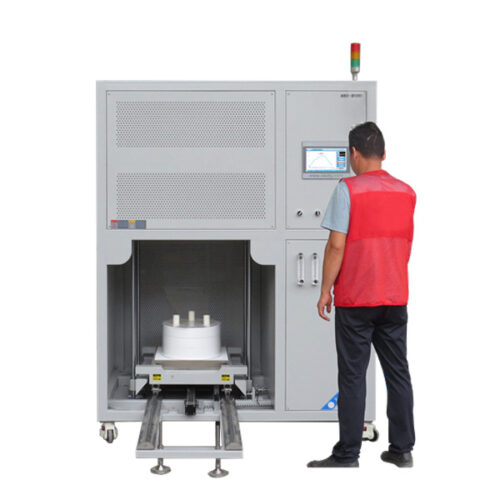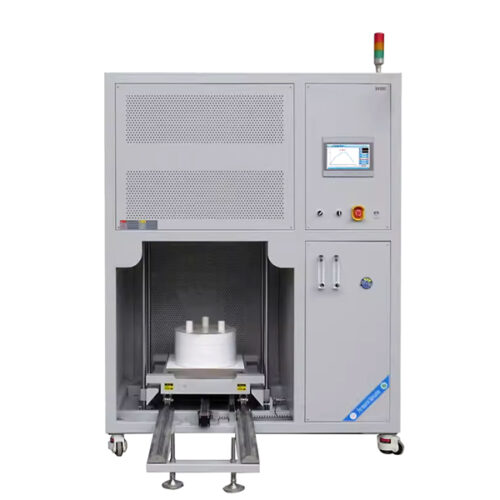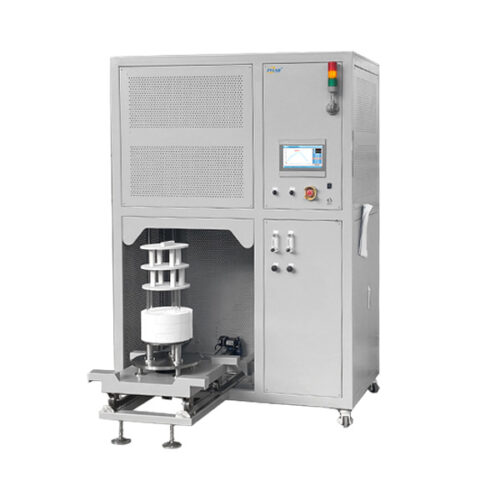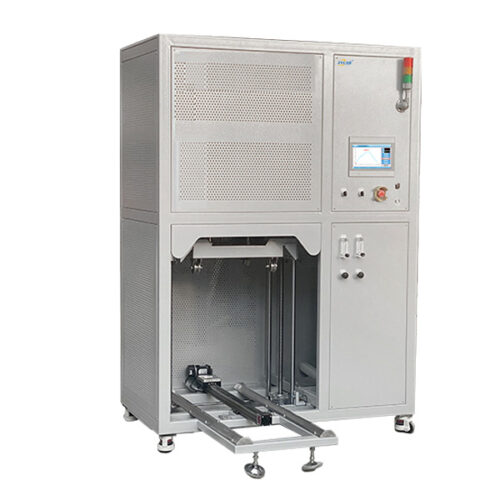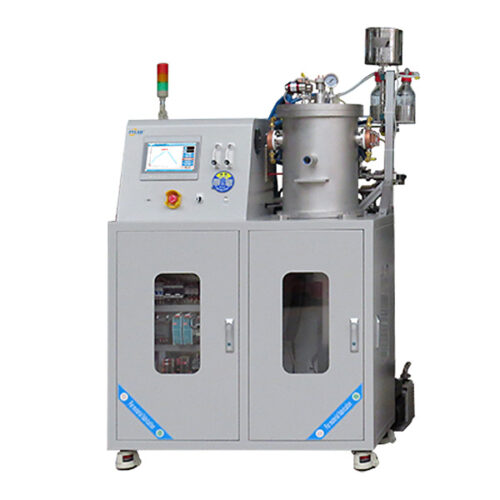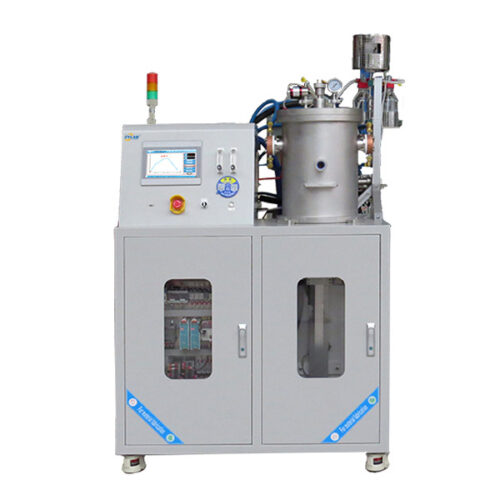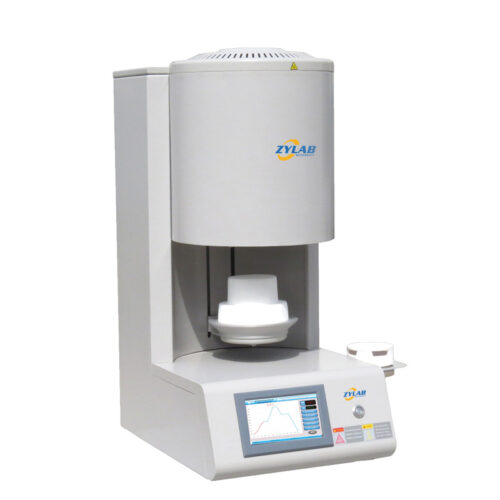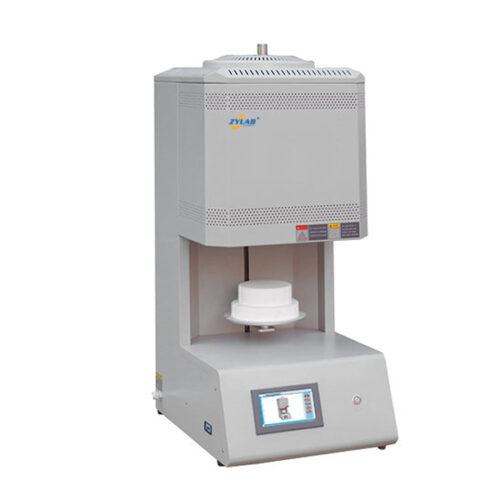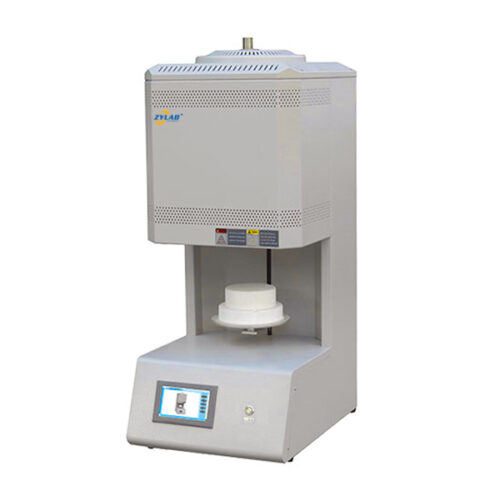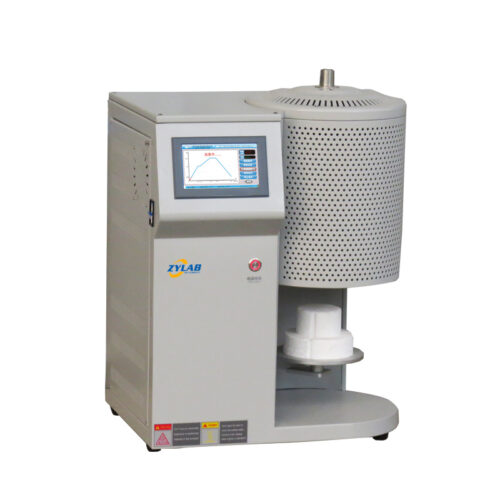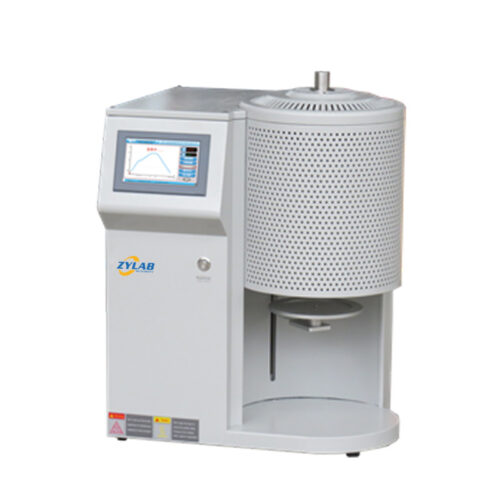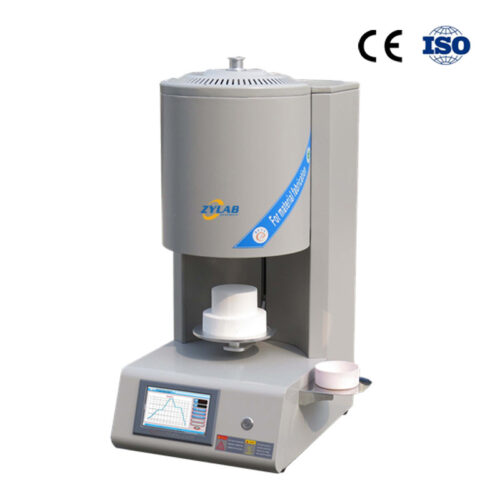Bottom Loading Furnace/Bell Furnace
A bottom loading furnace, also known as a bell furnace, designed with a loading mechanism located at the bottom of the heating chamber. This design allows materials to be loaded and unloaded from the furnace through a door or opening situated at the lower part of the furnace structure.
Bottom loading furnaces offer several benefits:
Ease of Loading and Unloading: Loading and unloading materials is easier and safer due to the bottom placement of the heating chamber, minimizing the risk of accidents or damage to materials.
Enhanced Safety: Built-in safety features reduce the risk of accidents during loading and unloading. Operators don’t need to reach over a hot chamber, reducing the risk of burns or injuries.
Improved Temperature Uniformity: Heat naturally rises, leading to better temperature distribution and consistency within the heating chamber, resulting in more uniform heating.
Versatility: Suitable for a wide range of applications including sintering, annealing, and heat treating various materials such as metals, ceramics, and composites.
Reduced Heat Loss: Less heat loss occurs when opening the door due to the bottom placement of the heating chamber, maintaining a stable temperature inside the furnace and reducing energy consumption.
Space Efficiency: Compact design makes them suitable for environments with limited space, easily integrated into existing workflows or production lines.
Customization Options: Offer customization options such as programmable temperature controls, multiple heating zones, gas atmosphere capabilities, and advanced safety systems.
In summary, bottom loading furnaces provide improved safety, temperature uniformity, versatility, and efficiency compared to other furnace designs, making them a preferred choice for many industrial and research applications.
Applications of Bottom Loading Furnace:
Bottom loading furnaces are versatile tools with applications across various industries and research fields. Some common uses include:
Materials Research: Ideal for sintering, annealing, and heat treating metals, ceramics, composites, and semiconductors. Researchers study material properties and phase transformations under controlled conditions.
Metallurgy: Used for heat treatment processes like tempering, quenching, and annealing of metallic components, improving mechanical strength and material characteristics.
Ceramics Sintering: Essential for sintering ceramic powders, producing durable components for electronics, aerospace, and automotive applications.
Glass Annealing: Relieves internal stresses in glass products, ensuring structural integrity and preventing breakage during cooling.
Heat Treatment: Employed in automotive, aerospace, and machinery manufacturing for tempering, stress relieving, and hardening metal parts.
Educational Institutions: Found in universities and technical schools for teaching materials science, metallurgy, and engineering, offering hands-on learning experiences.
Laboratory Research: Utilized across disciplines for thermal analysis, oxidation studies, and catalyst synthesis, among others.
Additive Manufacturing: Used for post-processing 3D printed parts, debinding and sintering metal and ceramic components to achieve desired properties.
Bottom loading furnaces provide a versatile platform for advancing technology and innovation in materials science, manufacturing, and research.
Order Bottom Loading Furnace from ZYLAB– Below models for selection:
Bottom Loading Furnace
2200°C Vacuum Tungsten Sintering Furnace | Precision Heat Treatment Equipment
800-1700.C
100-1200.C

